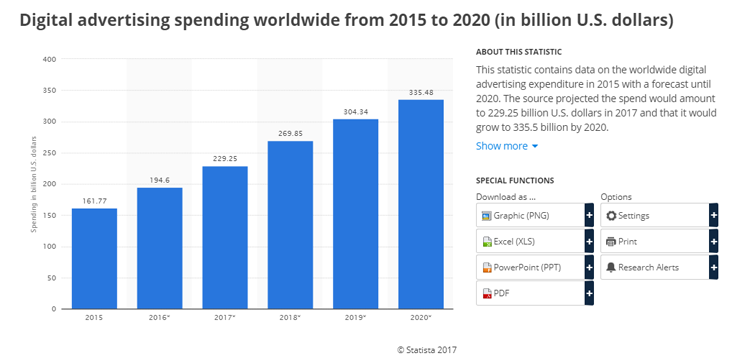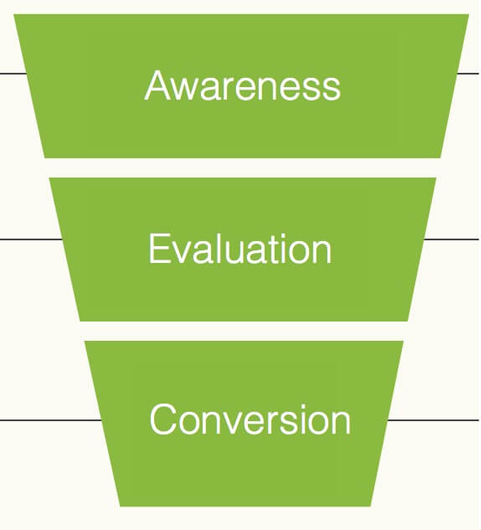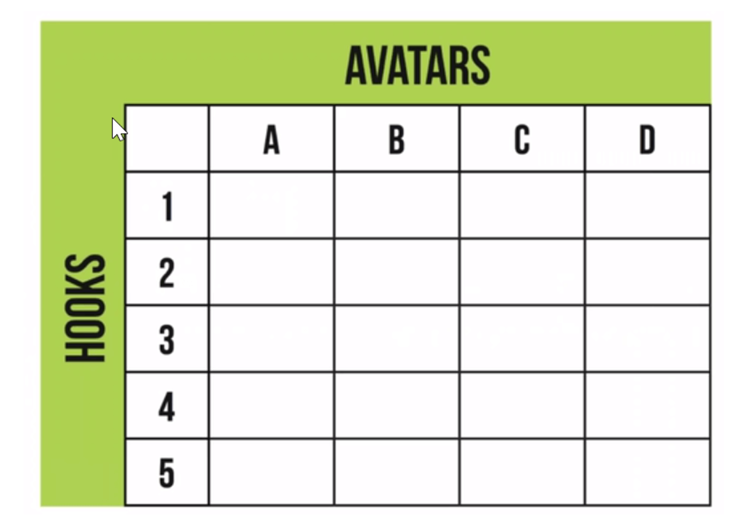How to Craft a Digital Advertising Strategy

How to Craft a Digital Advertising Strategy
Digital ad spend will reach $335 billion by 2020. Follow this easy guide to successfully cut through the noise, create targeted ads, and drive traffic with a winning online advertising campaign.
Web traffic is like water. Your business needs it to survive and it’s always flowing somewhere.
Sadly, organic traffic can be as unpredictable as rainfall. Fortunately, paid traffic is a hose.
Digital advertising allows you to control the flow of traffic to your website. Statistics and reporting firm Statista finds that the U.S. digital ad spend will reach $117 billion by 2020 – and $335 worldwide.

Whether your organic traffic is a trickle or a torrent, acquiring traffic via advertisements helps to grow your online presence and foster sales.
To achieve optimal visibility and conversions, you need to target the right audience, invest in the right channels, and orchestrate precise campaigns.
3 Digital Advertising Models
Most digital advertising models fall into one of the following three categories:
PPC (Pay Per Click) - The advertiser pays when someone clicks on the ad. Publishers are paid even if a purchase is not made. This is the most common form of online advertising, as it benefits both parties.
CPA (Cost Per Action) - The advertiser only pays the publisher if someone clicks and completes a transaction. The publisher assumes all risk in this model.
CPM (Cost Per Mille) - Also known as CPT (Cost Per Thousand), the advertiser pays for impressions to create exposure. If a website gets 1 million viewers per day and half the visitors see the ad, a CPM of $1 would equal $1000.
Major Types of Digital Advertising
Online advertising channels are numerous, varied, and offer different strengths and weaknesses.
The key is knowing where your customers are and which ad channels suit your marketing needs. There are too many advertising channels to mention here, but some popular choices include:
- Mobile Advertising: Serves interstitial banners, in-app messages, rich media, video, and SMS ads on mobile devices.
- Banner or Display Ads: Serve text or rich media in the form of skyscrapers, popups, buttons, or full banners.
- Google Adwords: Allows you to create ads that appear on relevant search results pages.
- Google Adsense: Serves ads on relevant web pages within the Adsense network.
- Retargeting: Serves your audience ads across platforms after they visit your website.
- Email Advertising: Reaches your email list with precise messaging in various formats.
- Native Advertising: A popular choice, as native ads don’t look like traditional advertisements or disrupt the viewer's online experience.
- Social Media Ads: Serves ads across Facebook, Instagram, Twitter, LinkedIn, Pinterest, Snapchat, and YouTube.
- Video Advertising: Serves ads pre-video, mid-video, or post-video.
How to Target Your Ad Audience
The most effective online advertising strategies are highly targeted. Knowing what types of ads to run and who to target hinges on two factors:
- The customer journey
- Traffic temperature
The Customer Journey
The customer journey is the path consumers follow to become customers.

From first touch to final sale, prospects must become aware of your offering, then evaluate it against the competition, and ultimately convert to a customer.
Traffic Temperature
Traffic temperature is the readiness of web visitors to purchase, measured from cold to hot. To move someone from cold to hot is to transform them into a customer.
Ad messaging should align with the temperature of website traffic to guide your target prospects into the next stage of the customer journey.
Cold Traffic: Cold traffic is people in the awareness stage who never heard of your company. Your goal is to introduce them to your business with entry-level content.
Warm Traffic: When people know your company but haven’t yet purchased. They align with the evaluation stage, so aim to acquire these visitors as leads with in-depth resources.
Hot Traffic: When people have already purchased. This is the conversion stage, so serve ads that illustrate why picking up the phone or completing an online order is so valuable.
A general rule of thumb for budgeting is called the rule of 6:3:1. If you’ve got $10 for advertising:
- $6 is spent attracting and persuading cold traffic.
- $3 is spent positioning your product or service to warm traffic during the consideration phase to drive sales of an entry-level product or service.
- $1 is spent convincing hot traffic to purchase your high-cost offering or making upsells or cross-sells.
How to Create a Digital Ad Campaign
An effective digital advertising campaign is well-planned and carefully orchestrated. You can use an ad grid to help create and implement these campaigns.

The ad grid aligns ad hooks to the profile and temperature of the customers you’re targeting. Creating an ad grid for each campaign will ensure that you’re effectively reaching each segment of your audience.
Step 1: Identify Your Avatars
Each traffic campaign should target 2-4 profiles (avatars) of people who will be interested in your ad offer.
Step 2: Research Your Avatars
Before you can create persuasive advertisements, you must know your audience.
To segment your ad offers for greatest impact research demographic, infographic, and behavioral data.
Step 3: Identify the Hooks
The most appealing benefits of your product or service will grab the attention of your audience.
Translate each benefit or expected outcome into a few hooks for each avatar.
Step 4: Write Ad Copy
Focus on writing benefits-driven copy that speaks to the viewer’s pain points.
Be sure to create unique ad copy for each segment. For example, if you have 4 avatars and five hooks, you’ll write 20 total ads.
Step 5: Generate Ad Creatives
Creatives are the visual components used in each ad. You’ll want at least one creative per unique hook.
For best result, align your visuals with your brand image. Bold and recognizable ad creative is essential for grabbing attention, establishing credibility, and encouraging conversions.
Step 6: Run Ads and Compile Results
You now have all the assets you need to run your digital advertising campaign. You can start to gather metrics after you’ve run ads for a week.
Consider:
- Click-through rate (CTR)
- Cost per click (CPC)
- Cost per 1000 impressions
- Cost per lead (CPL)
- ROI
- Bounce rate
- Traffic source
- Customer acquisition cost (CAC)
Your success metric depends on the traffic temperature you’re targeting and your ad campaign objective.
Step 7: Scale
Once you’ve figured out what’s working, scale your online advertising campaign to drive better results with a smaller investment.
Say ads are performing well for a certain avatar.
To scale horizontally, buy more traffic across other ad platforms and boost your visibility to that group of people.
To scale vertically, create more ad sets for the specific hook or avatar, and run them on the same platform.
Succeed With Online Advertising
While free traffic is preferred, paid traffic done well will always boost your exposure.
To succeed, you need to create different campaigns for each traffic temperature and stage of the buyer’s journey.
Once you find a winning ad or customer avatar, scale your ads to drive results.
